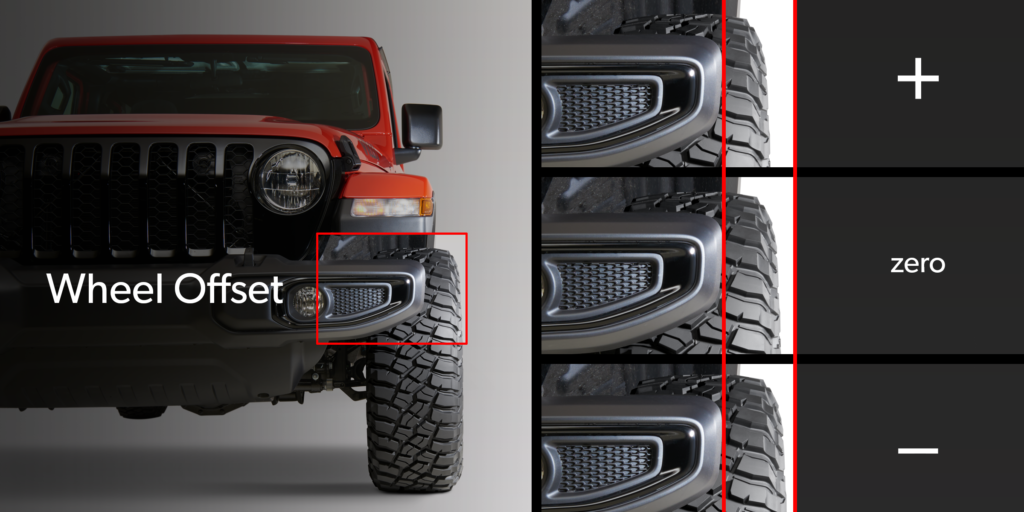Understanding Offset: A Comprehensive Guide
Introduction
The term “offset” has various meanings and applications across different fields, including engineering, manufacturing, surveying, and automotive design. This article aims to provide an in-depth understanding of what offset means, its types, applications, and significance in various contexts. We will explore the concept of offset in detail, including its measurement, implications, and practical examples, while also addressing common questions in a comprehensive FAQ section.
What Does Offset Mean?
In general terms, “offset” refers to a deviation or distance from a standard or reference point. The specific definition can vary depending on the context in which it is used. Below are some common interpretations of offset in different fields:
1. Engineering and Manufacturing
In engineering and manufacturing, offset often refers to the distance between two points or the deviation of a component from a specified position. It is crucial in ensuring precision and accuracy in designs and assemblies.
2. Surveying
In surveying, offset refers to the perpendicular distance from a main survey line to a feature of interest. Surveyors use offsets to measure and locate features that are not directly accessible from the main line.
3. Automotive Design
In automotive design, offset is commonly used to describe the distance between the centerline of a wheel and the hub mounting surface. This measurement is critical for determining how wheels fit on a vehicle and affects handling, stability, and aesthetics.
4. Printing
In printing, offset refers to a printing technique where ink is transferred from a plate to a rubber blanket and then to the printing surface. This method is widely used for high-volume printing due to its efficiency and quality.
5. Environmental Science
In environmental science, offset can refer to measures taken to compensate for environmental impacts, such as carbon offsets, which are used to balance out carbon emissions by investing in renewable energy or conservation projects.
Types of Offset
Understanding the different types of offset is essential for applying the concept correctly in various fields. Here are some common types:
1. Positive Offset
In automotive terms, a positive offset means that the hub mounting surface is closer to the front of the wheel, resulting in the wheel sitting further inward in the wheel well. This offset can affect the vehicle’s handling and appearance.
2. Negative Offset
A negative offset occurs when the hub mounting surface is closer to the back of the wheel, causing the wheel to protrude outward from the vehicle. This can enhance the vehicle’s stance but may lead to clearance issues.
3. Zero Offset
Zero offset indicates that the hub mounting surface is aligned with the centerline of the wheel. This configuration typically provides a balanced fit and is often preferred for standard applications.
4. Perpendicular Offset
In surveying, a perpendicular offset is the distance measured at a right angle from the survey line to the feature being measured. This type of offset is crucial for ensuring accurate measurements in construction and land surveying.
5. Oblique Offset
An oblique offset is any measurement taken at an angle that is not perpendicular to the main survey line. This type of offset may be necessary when features are located at a distance or when a right angle cannot be established.
Measuring Offset
Measuring offset accurately is crucial for achieving desired results, whether in automotive design, surveying, or manufacturing. Here are some methods for measuring offset in different contexts:
1. Measuring Wheel Offset
To measure wheel offset, follow these steps:
- Lay the Wheel Flat: Place the wheel face down on a flat surface.
- Identify the Hub Mounting Surface: Locate the flat area on the back of the wheel that contacts the hub.
- Measure the Centerline: Use a straight edge to find the centerline of the wheel.
- Calculate the Offset: Measure the distance from the hub mounting surface to the centerline. If the hub surface is closer to the outside, it is a positive offset; if it is closer to the inside, it is a negative offset.
2. Measuring Surveying Offset
For surveying offsets:
- Establish the Main Survey Line: Set up a reference line using a tape measure or survey rod.
- Determine the Feature Location: Identify the feature you want to measure.
- Use a Right Angle: Use a right-angle tool (like a builder’s square) to measure the perpendicular distance from the survey line to the feature.
- Record the Measurement: Note the distance as the offset.
3. Measuring in Manufacturing
In manufacturing, offsets may be measured using calipers or specialized measuring tools to ensure components fit correctly within specified tolerances.
Applications of Offset
Offsets play a critical role in various applications across different fields. Here are some notable examples:
1. Automotive Industry
In the automotive industry, offset is crucial for wheel fitment. Proper offset ensures that wheels are aligned correctly, which affects handling, stability, and tire wear. Incorrect offset can lead to clearance issues, impacting the vehicle’s safety and performance.
2. Construction and Surveying
In construction and surveying, offsets are used to accurately locate features such as buildings, roads, and utilities. By measuring offsets, surveyors can create precise maps and plans, ensuring that structures are built in the correct locations.
3. Printing Industry
In the printing industry, offset printing is a widely used technique for producing high-quality prints. This method allows for efficient mass production of materials such as books, magazines, and brochures.
4. Environmental Management
In environmental management, offsets are used to mitigate the impact of development projects on ecosystems. For example, carbon offsets allow companies to compensate for their emissions by investing in renewable energy projects or conservation efforts.
Importance of Offset
Understanding and accurately measuring offset is essential for several reasons:
1. Precision and Accuracy
In engineering, manufacturing, and surveying, precise measurements are critical for ensuring that components fit correctly and that structures are built accurately. Offsets help achieve the necessary precision.
2. Safety
In the automotive industry, proper wheel offset is vital for vehicle safety. Incorrect offset can lead to handling issues, increased tire wear, and potential accidents.
3. Environmental Responsibility
In environmental management, offsets play a crucial role in promoting sustainability and reducing the ecological impact of human activities. By investing in offsets, individuals and companies can contribute to environmental conservation efforts.
Table of Key Information
| Aspect | Details |
|---|---|
| Definition | Offset refers to the distance from a reference point. |
| Types | Positive, negative, zero, perpendicular, oblique. |
| Measuring Methods | Wheel offset, surveying offset, manufacturing offset. |
| Applications | Automotive industry, construction, printing, environmental management. |
| Importance | Precision, safety, environmental responsibility. |
FAQ Section
Q1: What does offset mean?
A1: Offset refers to the distance or deviation from a reference point, which can vary in meaning depending on the context (e.g., automotive, surveying, manufacturing).
Q2: How is offset measured in automotive design?
A2: Offset in automotive design is measured as the distance between the hub mounting surface and the wheel’s centerline.
Q3: What are the types of offset in surveying?
A3: In surveying, the types of offset include perpendicular and oblique offsets.
Q4: Why is offset important in engineering?
A4: Offset is important in engineering for ensuring precision and accuracy in designs and assemblies, which are critical for functionality and safety.
Q5: How does wheel offset affect vehicle performance?
A5: Wheel offset affects vehicle handling, stability, and tire wear. Incorrect offset can lead to clearance issues and safety concerns.
Q6: What is the difference between positive and negative offset?
A6: Positive offset means the hub mounting surface is closer to the front of the wheel, while negative offset means it is closer to the back of the wheel.
Q7: Can offset be used in environmental management?
A7: Yes, in environmental management, offsets are used to mitigate the impact of development projects on ecosystems, such as through carbon offsets.
Q8: What is the significance of measuring offsets accurately?
A8: Accurate measurement of offsets is crucial for ensuring proper fit, safety, and functionality in various applications.
Q9: How can I calculate wheel offset?
A9: To calculate wheel offset, measure the distance from the hub mounting surface to the wheel’s centerline. A positive value indicates a positive offset, while a negative value indicates a negative offset.
Q10: Where can I find more information about offset?
A10: For more detailed information about offsets, you can refer to the Wikipedia page on Offset.
Conclusion
The concept of offset is multifaceted and plays a significant role in various fields, including automotive design, engineering, surveying, and environmental management. Understanding what offset means, its types, and its applications is essential for professionals and enthusiasts alike. By accurately measuring and applying offsets, individuals can ensure precision, safety, and environmental responsibility in their respective fields.



